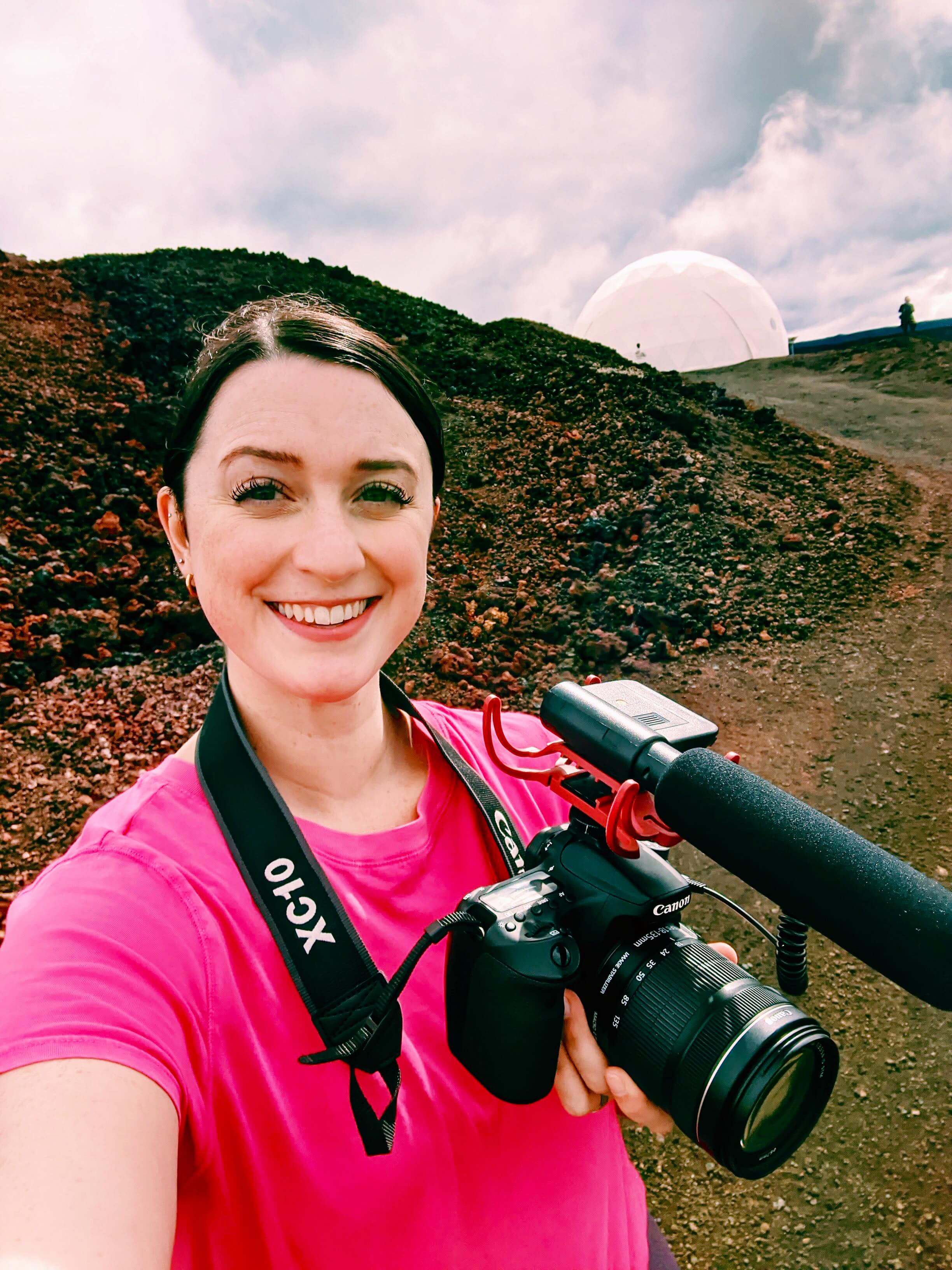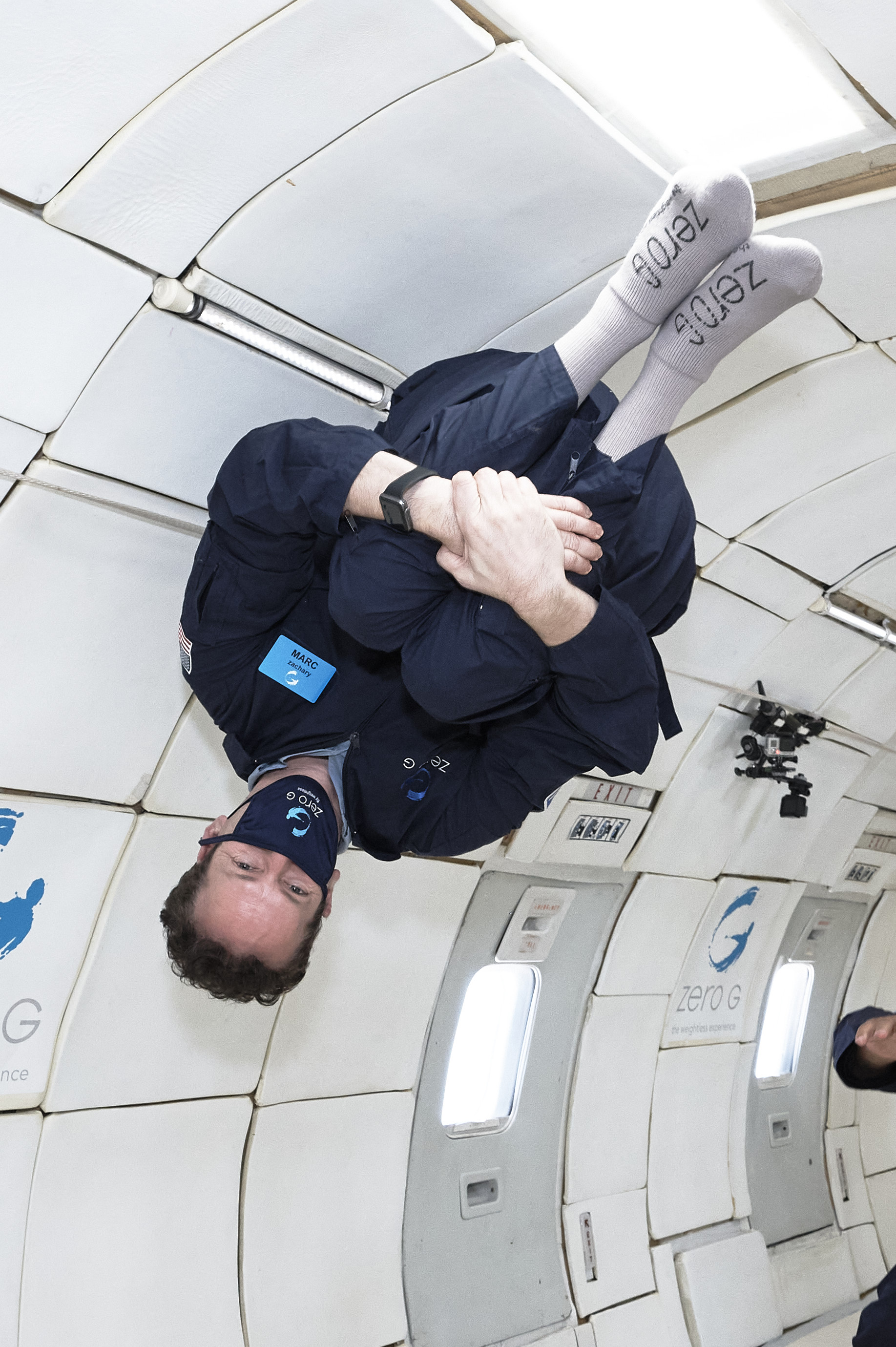Weightless wonder: Why people are choosing to fly with Zero-G in a pandemic
In the middle of a pandemic, people are finding their personal safe haven in the sky, floating in "zero gravity."
Zero Gravity Corporation (Zero-G) allows paying customers to float in "zero gravity," or the sensation of weightlessness in microgravity, by taking them on parabolic flights that, by flying an airplane in a specially-designed arc pattern, simulate a microgravity environment on board. And, after shutting down briefly because of the coronavirus pandemic and subsequently bolstering their safety protocol, the company is back off the ground, lifting people into weightlessness.
So, what is like to float in one of these planes, especially now while the world continues to battle the pandemic? And why now, of all times, would people sign up for such an adventure? Space.com spoke with Faisal Sublaban, the president and CEO of Bonotel Exclusive Travel and one of the few who flew on Zero-G's Aug. 16 flight — the company's first flight since returning from its brief pause — to see what it was like.
Fun in Zero-G: Weightless photos from Earth and space
To sum it up, "the experience is pretty incredible," Sublaban said. They went on to talk about how fun it was to experience different "types" of gravity, such as Mars gravity, lunar gravity and near-zero gravity or weightlessness.
"You really don't realize what weightless means" until you actually experience it, Sublaban added. "You really get to experience what it is like to be in space."
So why go now? During a pandemic? For Sublaban and his wife, who was also on this flight, they couldn't pass up what he described as a truly unique experience. "I'm actually looking to go again next weekend," he said enthusiastically.
Floating in a pandemic
Upon reopening, the company added a number of additional safety features to the flight experience so that passengers were as protected as possible from the spread of the novel coronavirus.
Breaking space news, the latest updates on rocket launches, skywatching events and more!
"People seem to think that we're taking this as serious as it can be, and done everything we can do to provide a safe environment," Zero-G CEO Matt Gohd told Space.com. [Full disclosure: Matt Gohd is a distant relative of Space.com staff writer Chelsea Gohd.]
The flight experience "was really, really buttoned up," Sublaban said, referring to the safety precautions taken. "I think they just do a really good job of kind of getting ahead of the concerns and making you feel comfortable."
"We became aware of what was going on in the world, seeing what airlines were doing … we decided to work on a protocol that would give maximum safety," Gohd added.
With these new safety protocols, Zero-G implemented preflight temperature and pulse oximeter checks to help ensure that passengers were healthy enough to fly, added virtual training videos to cut down on in-person training on the ground, began providing passengers with masks (which passengers are mandated to wear) and started sterilizing flight suits, socks and the airplane cabin.
"We've shortened, by probably at least 50%, the amount of ground time you are together with other people," Gohd said.
The company has also cut down the number of passengers per flight by one-third. "So now there's even more room in the plane to do your somersaults and backflips and all those cool things," he added.
Related: TV's 'The Bachelor' takes a ride with Zero G
Spacesuits
Now, while flyers like Sublaban are protected with masks, sanitization and new safeguarding procedures, Zero-G is cooking up a new piece of technology that will take that protection to the next level: spacesuits. Well, not exactly.
According to Gohd, "We are working with the design team to develop what will basically be a combination of a hazmat [suit] and spacesuit … [that will] put you in a totally self contained environment."
"From an interaction standpoint, you will be on the plane totally sealed up doing your thing," Gohd said. So, "if you bumped into somebody, who cares." He added that the suit has passed the design stage, and with a successful prototype in hand it won't be long before weightless passengers will be outfitted in protective "spacesuits."
Obviously, this will be an important step for long-term protection for Zero-G flyers. But more than that, who doesn't want to wear a helmeted "spacesuit" and feel like a space-exploring astronaut?
Email Chelsea Gohd at cgohd@space.com or follow her on Twitter @chelsea_gohd. Follow us on Twitter @Spacedotcom and on Facebook.
Join our Space Forums to keep talking space on the latest missions, night sky and more! And if you have a news tip, correction or comment, let us know at: community@space.com.

Chelsea “Foxanne” Gohd joined Space.com in 2018 and is now a Senior Writer, writing about everything from climate change to planetary science and human spaceflight in both articles and on-camera in videos. With a degree in Public Health and biological sciences, Chelsea has written and worked for institutions including the American Museum of Natural History, Scientific American, Discover Magazine Blog, Astronomy Magazine and Live Science. When not writing, editing or filming something space-y, Chelsea "Foxanne" Gohd is writing music and performing as Foxanne, even launching a song to space in 2021 with Inspiration4. You can follow her on Twitter @chelsea_gohd and @foxannemusic.


